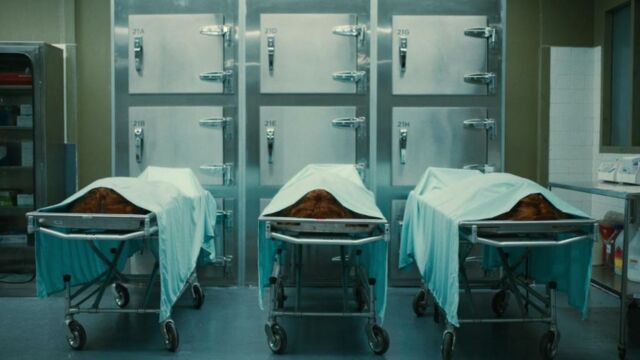When we die, while our brains and organs may no longer function, our bodies continues to change. Some side effects of death, like rigor mortis, or the stiffening of the body muscles post-mortem, are well known. Other post-death biological stages are less known.
Discover our latest podcast
One side effect of death that takes place only shortly after biological death is the forming of blisters on the skin, according to Grunge. These blisters develop in the very first stage the body goes through: autolysis, which is when the body starts to break down from the inside.
Here's how the blisters appear
Prior to blisters developing, internal organs — including the brain, liver, and heart — are totally deprived of oxygen. This results in an acid build-up in specific parts of the body that causes cells to breakdown, releasing enzymes particularly from the liver — which begin self-digestion.
As the enzymes start digesting the cell from the inside out, small gaseous blisters are eventually formed in and on internal tissues, organs, and on the skin. When these putrefactive fluid-filled blisters rupture, they can sometimes give a dead body a sheen-like appearance.
This part of the process usually occurs anywhere from approximately 18 to 36 hours following death, and takes place at approximately the same time as rigor mortis begins.
What happens to the body when it starts to decompose?
When the body starts to decompose, bacteria — especially in the stomach and intestine — and other microbes, which are usually regulated when we're alive, emerge and feed upon the proteins and carbohydrates of the blood and body parts. At this time, the skin undergoes discolouration, known as 'marbling', and starts to sag.
Meanwhile, as a result of these processes, numerous biological substances are produced. These putrefactive gases build up and become trapped in the body, which causes it to eventually swell and bloat, according to Postmortem Changes.
If a human body is allowed to naturally decompose, this entire process starts almost immediately, and the body could be reduced to a skeleton in only two weeks. However, if a body is embalmed and buried in a casket, so-called 'skeletonization' may take years, according to Scientific American.
Read more:
⋙ This is how your skin changes right before you die
⋙ This is how your breathing changes right before you die
Sources used:
Grunge: 'The Normal (Yet Disturbing) Side Effect Of Death You Probably Don't Want To Know About'
StatPearls Publishing: 'Postmortem Changes'
Scientific American: 'Dust to Dust: The Brief, Eventful Afterlife of a Human Corpse'















